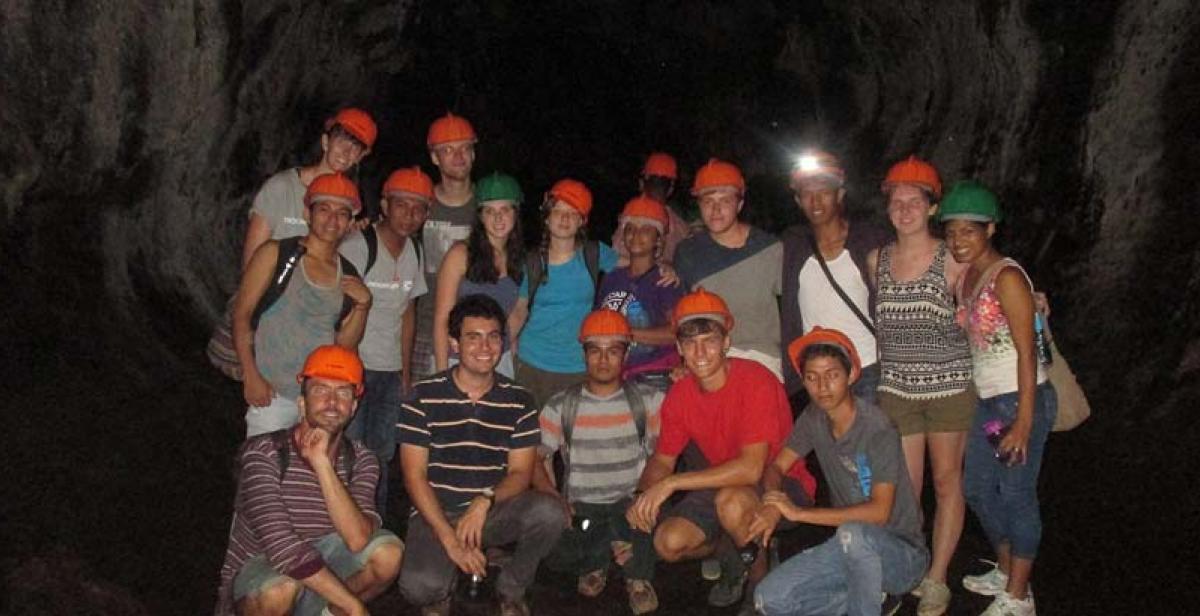After seven weeks of hard work from both groups it seemed like it was about time that Group 1 took a trip to the volcano to see exactly what Group 2 had been up to. We were given the option of two different routes. The first, called Las Marias, was a route which Group 2 had done a lot of work on. The second, called Las Pencas, was a longer, more scenic route that they hadn’t done much work on, but still needed to promote. For both routes, Group 2 had to take photos of the tour for brochures and posters to promote the volcano and encourage more tourists.
I chose the Las Pencas route, which was a really nice walk. The tour guides stopped every so often to talk a little bit about the volcano in both English and Spanish. First, we walked through a forest-like area and we saw some wildlife in their natural habitat, like monkeys and a snake, which was a surreal experience because we don’t have much impressive wildlife in England.
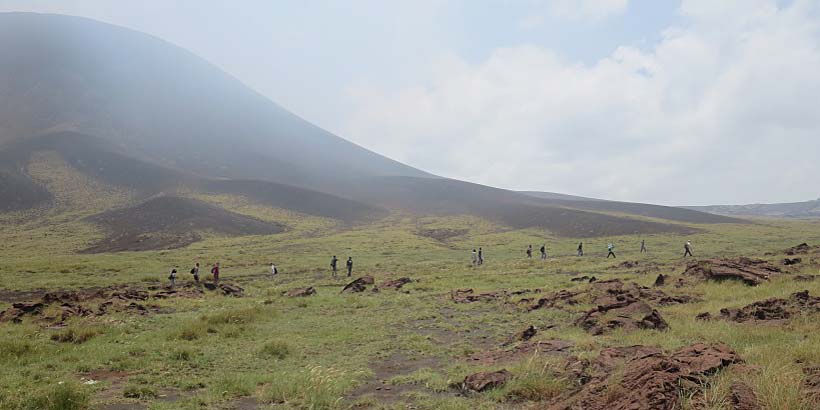
During the walk we walked through a large valley between the crater of the volcano and some mountains on the other side. It was covered in old lava from the last eruption and we could see where the lava had flowed down the side of the volcano. Unfortunately, it was covered in sulphur gases, so everyone was coughing non-stop as we walked past, but it didn’t take away from the picturesque views.
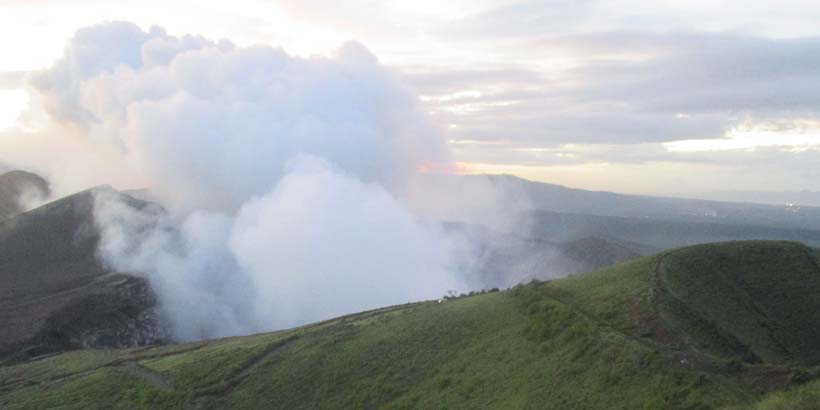
The other group said that they really enjoyed the other route too. They said that they loved the variation in scenery and that it was a very sheltered easy walk. They got to see the bat cave, which was really impressive, and thought it was very spacious.
“It was quite exciting as it was very dark and you had to take in torches to navigate through the tunnel before you came out into a huge cave. There are no lights in the bat cave so it is pitch black without the torches. It was hard to see the bats clearly but you caught glimpses of them flitting around, you could also hear their sounds, which was amazing. Then we turned all the lights off and tried to get our eyes used to the dark so we could see the bats. I couldn’t see anything but I really liked being able to concentrate on hearing their sounds and the flapping of their wings. After we turned the lights on we were given a talk about the bat cave and learnt more about the bats in Volcan Masaya.” (Emma Towes-Phillips)
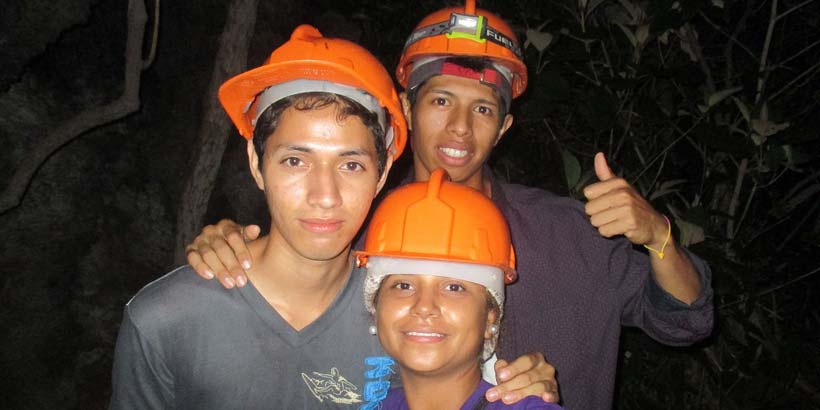
They also got to see the steps that Group 2 made that led up to the eco-farm and the viewpoint, both of which were very impressive. The steps made the volcano much more accessible as it would be a struggle to walk up without them. They thought that the viewpoint had really stunning views. The group who walked ‘Las Marias´ also got to see the eco-latrines that Group 2 had made, which apparently smelt really nice.
Overall, all of us were amazed with what Group 2 had accomplished over the seven weeks, it’s almost as impressive as the work that Group 1 has done in La Sabanita. I know that Volcan Masaya National Park will benefit a lot from the work that they’ve been doing so far.
Written by ICS volunteer Jack Stead
Senderos, colas y olores de azufres
Después de siete semanas de duro trabajo de ambos grupos parecía que ya era hora de que el Grupo 1 hiciera un viaje al Volcán Masaya para ver exactamente lo que el Grupo 2 había estado haciendo. Nos dieron la opción de dos rutas diferentes. La primera llamada Las Marías, era una ruta en la que el Grupo 2 había hecho un montón de trabajo, en el segundo llamado Las Pencas era una ruta más larga, más pintoresca y que no habían hecho mucho trabajo pero aún es necesario promover. Para ambas rutas, el Grupo 2 tuvo que tomar fotos de la gira para los folletos y carteles para promover el volcán y alentar a más turistas.
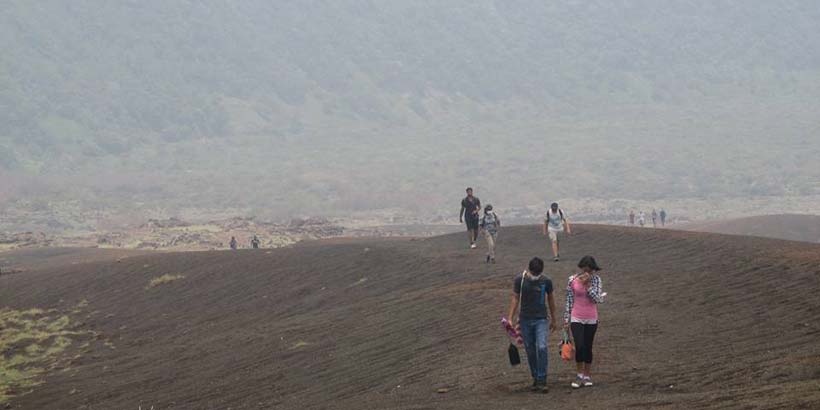 Elegí la ruta Las Pencas que fue realmente un agradable paseo, los guías turísticos se detuvieron de vez en cuando para hablar un poco sobre el volcán en Inglés y Español. Primero caminamos a través de un área de bosque similar y vimos algunos animales salvajes en su hábitat natural, como monos y una serpiente que fue una experiencia surrealista, porque no tenemos mucha fauna impresionante en Inglaterra.
Elegí la ruta Las Pencas que fue realmente un agradable paseo, los guías turísticos se detuvieron de vez en cuando para hablar un poco sobre el volcán en Inglés y Español. Primero caminamos a través de un área de bosque similar y vimos algunos animales salvajes en su hábitat natural, como monos y una serpiente que fue una experiencia surrealista, porque no tenemos mucha fauna impresionante en Inglaterra.
urante la caminata. Caminamos a través de un gran valle entre el cráter del volcán y algunas montañas en el otro lado. Estaba cubierto de vieja lava de la última erupción y pudimos ver donde la lava fluyo por el lado del volcán. Por desgracia, estaba cubierto de gases de azufre, por lo que todo el mundo estaba tosiendo sin parar mientras caminábamos, pero eso no le quita las vistas pintorescas.
El otro grupo, dijo que realmente disfrutaron de la otra ruta también. Comentaron que les encantó la variación en el paisaje y lo seguro de la ruta y de fácil acceso para el paseo. Ellos vieron la cueva de los murciélagos, que era realmente impresionante y muy espaciosa.
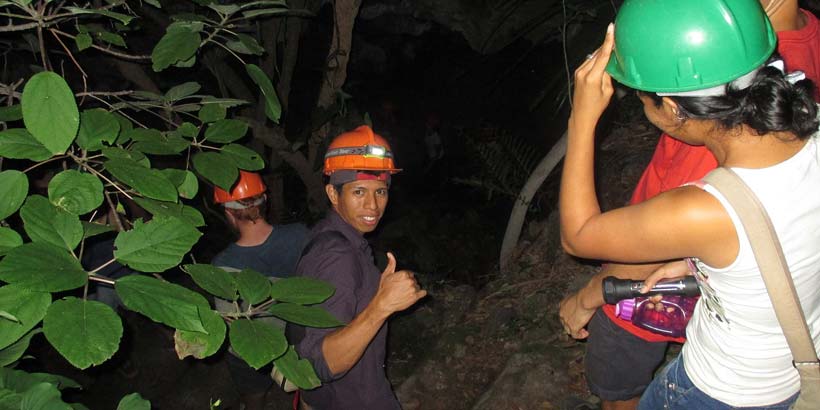
“Fue muy emocionante, ya que estaba muy oscuro y había que tener antorchas para navegar a través del túnel, antes de entrar en la enorme cueva. No hay luces en la cueva de los murciélagos por lo que es de tono negro. Sin las antorchas era difícil ver a los murciélagos con claridad pero ellos revolotearon alrededor nuestro, también pudimos escuchar sus sonidos, lo cual fue increíble. Entonces, dimos la vuelta con todas las luces apagadas y tratamos de adaptar nuestros ojos a la oscuridad, de esta manera pudimos ver los murciélagos. No podía ver nada, pero me gustó mucho ser capaz de concentrarme en escuchar sus sonidos y el batir de sus alas. Después dimos la vuelta con las luces encendidas, nos dieron una charla sobre la cueva de los murciélagos y aprendimos más sobre los murciélagos en Volcán Masaya ". (Emma Towes-Phillips)
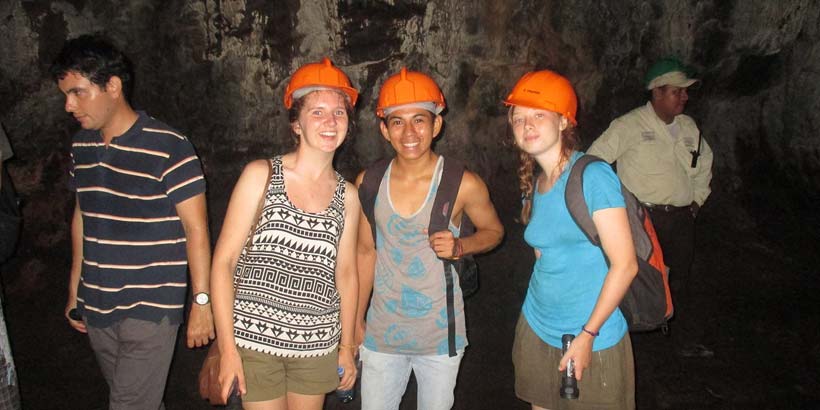
También fuimos a ver las rutas que el grupo dos hizo la cual conducía a la granja ecológica y el mirador, las cuales fueron muy impresionantes. Las rutas creadas hicieron el volcán mucho más accesible, ya que sería una lucha subir sin ellos. Pensaban que el mirador tenía unas vistas realmente impresionantes. El grupo que caminó 'Las Marías' también llegó a ver los eco-letrinas que el Grupo 2 había hecho que aparentemente olían muy agradablemente.
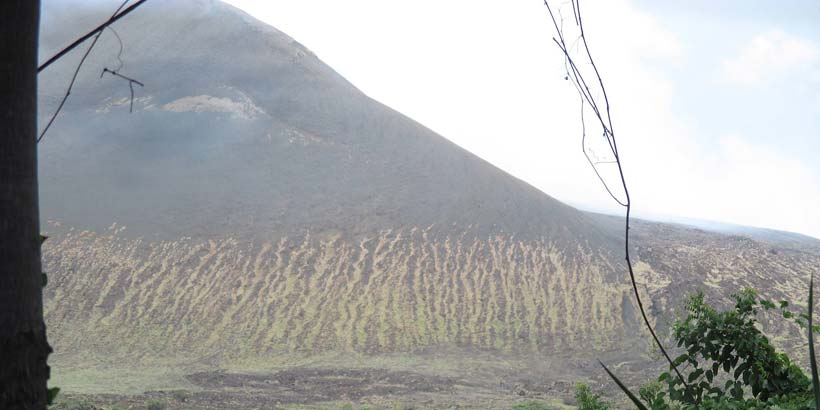
En general, todos nosotros nos quedamos impresionados con lo que el Grupo 2 había logrado en las siete semanas, es casi tan impresionante como el trabajo del Grupo 1 en La Sabanita. Sé que el Parque Nacional Volcán Masaya se beneficiará mucho del trabajo que han estado haciendo hasta ahora.
Escrito por el voluntario de ICS Jack Stead


